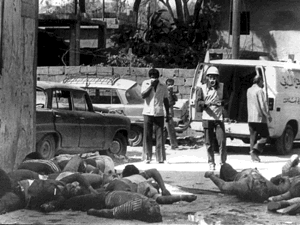
The population in 1945 within this village was 1490, with 202 houses. Before 1948, it had a road connecting it to Haifa, a railway, a port north of the village, and two schools: one for boys and one for girls. Economically, it relied on fishing and agriculture, with a total of 26 dunams allocated for citrus fruits and bananas, 6593 for grains, and 287 for vegetables.
On May 9, the Zionist decision to expel and subjugate the residents was made, and on the night of May 22-23, 1948, the decision was executed when the 33rd Battalion of the Alexandroni Brigade in the Haganah attacked the village. After a short battle, the village fell, and 1200 of its residents fled to the neighboring village of Al-Faridis, while some went to Al-Muthalath.
Israeli historian Theodore Katz confirms that what happened in Tantura, south of the city of Haifa, was a massacre on a large scale. He mentions that the village fell into the hands of the Israeli army, and soldiers engaged in a bloody pursuit in the streets for several hours, followed by concentrated gunfire at the inhabitants.
In the cemetery where the victims' bodies were buried, numbering 200, a parking lot was later erected as a facility for the "Dor" colony beach on the Mediterranean Sea south of Haifa. Recently, a mass grave was discovered in the village of Tantura, containing more than 200 bodies.







Share your opinion